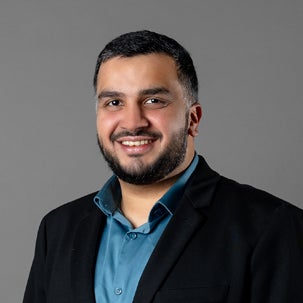
Fahim Dalvi
Software Engineer
Fahim Dalvi
Software Engineer
Educational Qualifications
Masters of Science in Computer Science
Bachelors of Science in Computer Science
Entity
Qatar Computing Research Institute
Divison
Arabic Language Technologies
Biography
Fahim Dalvi is a Software Engineer at QCRI. Dalvi’s research as part of the Arabic Language Technologies team is centered around the intersection of Natural Language Processing and Deep Learning, and he has worked on wide variety of problems in these fields, including machine translation, language modeling, and explainability in deep neural networks. He also spends his time converting research into practical applications, with a focus on scalable web applications, as well as mentoring and teaching deep learning at fall and summer schools.
Masters of Science in Computer Science
Stanford University; Stanford/United States of America
2016
Bachelors of Science in Computer Science
Carnegie Mellon University; Pittsburgh/United States of America
2014
- Deep Learning
- Machine Learning
- Natural Language Processing
- Explainable AI
- Machine Translation
Software Engineer
Qatar Computing Research Institute; Hamad Bin Khalifa University
2017 - Present
Research Associate
Qatar Computing Research Institute; Hamad Bin Khalifa University
2016 - 2017
Co-founder
Problemia
2015 - 2016
3D Content Creator
Williams F1
2012 - 2012
- Identifying And Controlling Important Neurons In Neural Machine Translation; Seventh International Conference on Learning Representations (ICLR)
- What Is One Grain of Sand in the Desert? Analyzing Individual Neurons in Deep NLP Models; The Thirty-Third AAAI Conference on Artificial Intelligence (AAAI-19)
- NeuroX: A Toolkit for Analyzing Individual Neurons in Neural Networks; The Thirty-Third AAAI Conference on Artificial Intelligence (AAAI-19)
- Incremental Decoding and Training Methods for Simultaneous Translation in Neural Machine Translation; The 16th Annual Conference of the North American Chapter of the Association for Computational Linguistics (NAACL)
- Qlusty: Quick and Dirty Generation of Event Videos from Written Media Coverage. NewsIR@ ECIR, 2079, 27-32.
- Understanding and Improving Morphological Learning in the Neural Machine Translation Decoder; 8th International Joint Conference on Natural Language Processing (IJCNLP)
- Evaluating Layers of Representation in Neural Machine Translation on Part-of-Speech and Semantic Tagging Tasks. In Proceedings of the Eighth International Joint Conference on Natural Language Processing
- Neural Machine Translation Training in a Multi-Domain Scenario. In Proceedings of the 14th International Workshop on Spoken Language Translation.
- Challenging Language-Dependent Segmentation for Arabic: An Application to Machine Translation and Part-of-Speech Tagging. In Proceedings of the 55th Annual Meeting of the Association for Computational Linguistics.
- What do Neural Machine Translation Models Learn about Morphology?; 55th Annual Meeting of the Association for Computational Linguistics (ACL)
- QCRI Live Speech Translation System. EACL 2017, 61.
- QCRI@ DSL 2016: Spoken Arabic Dialect Identification Using Textual. VarDial 3, 221.
- QCRI's Machine Translation Systems for IWSLT'16. In Proceedings of the 13th International Workshop on Spoken Language Translation.
- 2017; Best Audience Experience; BBC NewsHack; London/UK
- 2016; Best Arabic machine translation system; IWSLT; Seattle/USA
- 2015; Best MYO hack; Hack Overflow; Stanford/USA
- 2014; Hamad Bin Khalifa University President's Award; HBKU; Doha/Qatar
- 2014; Outstanding Academic Achievement; Carnegie Mellon University; Doha/Qatar
- 2014; Senior Student Leadership Award; Carnegie Mellon University; Doha/Qatar


